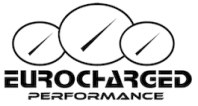Results 1 to 15 of 15
-
05-24-2014, 12:40 AM #1
 Member
Member













- Join Date
- Mar 2014
- Posts
- 812
- Rep Points
- 1,205.0
- Mentioned
- 37 Post(s)
- Rep Power
- 13
Transient throttle. Effected by fuel scalar or adaptations?
I've been playing around with running 15.5:1 in the cruise areas, advancing timing and reducing the EGR a little (replacing some of the recirculated exhaust with cool, clean air. Good for keeping intake valves cleaner, bad for N0x emissions and good for economy). During steady state driving, it's GREAT and because any given load point makes a bit less torque than the DME thinks does, it has the positive side-effect of holding back the Alpina trans flash from changing up gears so quickly in D.
Admittedly, I've given it very little driving time to adapt but it misfires when I make a sudden change to the throttle. Both the spark plugs and coils have been replaced recently. Would changing the fuel scalar help this? My theory behind it is that maybe transient throttle happens too quickly for it to be 'adaptive' and maybe changing the fuel scalar will alter the amount of fuel injected during transient throttle and the adaptations will bring the steady state AFR back in to spec. Does anyone know for sure how transient throttle fuel is calculated?
Cheers,
Brad
-
05-24-2014, 11:23 AM #2
 Member
Member















- Join Date
- Dec 2012
- Location
- Florida
- Posts
- 1,613
- Rep Points
- 3,270.5
- Mentioned
- 125 Post(s)
- Rep Power
- 33
Reducing EGR will actually have negative impacts on economy, the inert, burnt air serves to reduce displacement and the reduced dynamic compression from the increased overlap serves to reduce engine vacuum/braking effect, but anyway... can you measure your AFR when the misfire happens? Could be a lean miss, and fuel scalar does effect tip in fuel delivery since there is a minor delay in closed loop adjustment. It's more obvious when you are leaning it out and reducing egr I've found, but that was when I had overlap/egr very reduced. It did help some to reduce timing slightly compared to cruise with egr, maybe due to the higher cylinder pressures the vanos changes made. Just thoughts, I was just getting into it last week myself and my dme injector drivers failed.
I think it would be great if we could find some vanos settings that reduce it enough to keep valves cleaner but not sacrifice any mileage... tough order though.
-
05-25-2014, 02:14 AM #3
 Member
Member













- Join Date
- Mar 2014
- Posts
- 812
- Rep Points
- 1,205.0
- Mentioned
- 37 Post(s)
- Rep Power
- 13
The goal is to add unused air by running leaner and moving slightly up in load to achieve the same torque. I'm hoping that there will be more unused air added than the EGR gas taken away so economy should still improve. I've also read that EGR is good for economy but not as good as running lean but EGR is the only choice when you must stick to 14.7:1 to keep the cats working.
I've only taken a very small amount of EGR out. I think I'll change the fuel scalar to 1.01 and change the 15.5:1 target cells down to 15.4:1 and see how that drives.
I've attached my fuel and VANOS tables for anyone interested. The first one is actual values and the second on is the difference when compared to the factory maps.
-
05-25-2014, 06:42 AM #4
 Member
Member













- Join Date
- Mar 2014
- Posts
- 812
- Rep Points
- 1,205.0
- Mentioned
- 37 Post(s)
- Rep Power
- 13
I changed my mind again lol. I took a little more EGR out (again, only a tiny bit), changed the fuel scalar to 1.01 and left the AFR table because there should be no problem with 15.5:1. I think I'm just pushing the ignitability limits a bit far by having BOTH lots of EGR and lean AFR together.
I'll do some logging later in the week and see how the AFR and fuel trims look. Admittedly, I haven't logged anything yet, just assumptions and theory so far.
-
05-25-2014, 03:24 PM #5
 Member
Member















- Join Date
- Dec 2012
- Location
- Florida
- Posts
- 1,613
- Rep Points
- 3,270.5
- Mentioned
- 125 Post(s)
- Rep Power
- 33
When I decreased/disabled the EGR I basically advanced the exhaust cam by raising all the mid load numbers to a minimum of 95ish and adjusted the intake to hold a LSA value 91-94 for the complementary RPM/LOAD cells. Stock had LSA values in the 70's and 80's in the area's I modified the most, but basically just tried to get every LSA over 90 mainly with exhaust cam advance and minor intake cam tweaks here and there. With some other minor adjustments it was responsive as hell with those settings. I could see this being very interesting to those who want to track, turbo spool was off the heezy.
-
05-25-2014, 05:56 PM #6
I have nothing to add, just that this is a great thread and I appreciate you guys sharing your experiences. Thank you.
-
05-26-2014, 01:02 PM #7
 Glorious Bastard
Glorious Bastard










- Join Date
- Jun 2010
- Posts
- 643
- Rep Points
- 686.0
- Mentioned
- 34 Post(s)
- Rep Power
- 7
@V8Bait: How are you calculating LSA from the VANOS tables? Can you post your modifications?
Attached is the table that Shiv's OFT uses, plus the offset from a stock map.LEMANS BLUE M-TECH E92->PROCEDE REV3::ETS 7" FMIC::RACELAND DPS::WAVETRAC DIFF::DEFIV DIFF LOCKDOWN::DEFIV OCC::DEFIV INTAKE::RB PCV
-
05-26-2014, 01:49 PM #8
 Member
Member















- Join Date
- Dec 2012
- Location
- Florida
- Posts
- 1,613
- Rep Points
- 3,270.5
- Mentioned
- 125 Post(s)
- Rep Power
- 33
Vanos tables are cam centerline values, lsa is a simple mathematical relationship once you account for one cam being in ATDC and one cam measured BTDC, the spreadsheet I uploaded allows you to copy/paste the tables and calculates lsa right below. I've actually substantially updated a ton of maps and completely gone through the spreadsheet since school let out (with some vanos tables I've tried for autox too) and intend on uploading the updated one in a day or two once my car is fixed and I verify a few things, but the lsa calculator is already there if you don't wanna wait.
Eff it I'll upload it in an hour or so. Why not.Last edited by V8Bait; 05-26-2014 at 01:56 PM.
-
05-26-2014, 07:20 PM #9
 Member
Member













- Join Date
- Mar 2014
- Posts
- 812
- Rep Points
- 1,205.0
- Mentioned
- 37 Post(s)
- Rep Power
- 13
I've got a spreadsheet with cell colouring for intake, exhaust and LSA. I'll post it up when I get home...
-
05-27-2014, 07:00 AM #10
 Member
Member













- Join Date
- Mar 2014
- Posts
- 812
- Rep Points
- 1,205.0
- Mentioned
- 37 Post(s)
- Rep Power
- 13
The spreadsheet has fixed colour scaling so you can see the changes you make in colour without Excel 're-adjusting' the red colour with the automatic scaling.
Stock
My modded
Zipped spreadsheet
VANOS.zip
-
05-27-2014, 09:28 AM #11
 Guest Vendor
Guest Vendor






- Join Date
- Nov 2012
- Posts
- 2,495
- Rep Points
- 1,970.5
- Mentioned
- 204 Post(s)
- Rep Power
- 0
When you say you are getting a misfire on tip-in, is it actually throwing a CEL, do you feel it, or is it showing as knock across all cylinders? Because even with the OTS maps, often times right at initial tip-in, timing is pulled across all cyls. This seems to be normal operation of the DME to get timing where it wants, expecting the onset of positive IM pressure.
-
05-27-2014, 09:41 AM #12
 Member
Member













- Join Date
- Mar 2014
- Posts
- 812
- Rep Points
- 1,205.0
- Mentioned
- 37 Post(s)
- Rep Power
- 13
Now I'm not so sure. Initially I did get misfire with a code but only once. It hasn't misfired with a code since but tip-in is still very 'jerky'. It could be sudden timing pulls. I'll log some driving on the weekend as I drive a work car during the week.
-
05-27-2014, 11:11 AM #13
 Member
Member















- Join Date
- Dec 2012
- Location
- Florida
- Posts
- 1,613
- Rep Points
- 3,270.5
- Mentioned
- 125 Post(s)
- Rep Power
- 33
Nice with the shading, fancier than mine that is only values

One thing about reducing egr is that it will dramatically increase the flame speed, so the more you pull the less timing you'll want to run, I wish I knew the exact cam specs, LSA only gives you general trends for overlap.
-
05-27-2014, 05:02 PM #14
 Member
Member













- Join Date
- Mar 2014
- Posts
- 812
- Rep Points
- 1,205.0
- Mentioned
- 37 Post(s)
- Rep Power
- 13
Yeah I might drop timing a little where EGR has been reduced. Going leaner than 14.7:1 reduces flame speed, requiring more timing so I'll prob start by returning timing to stock values where the EGR has been taken out.
-
05-27-2014, 08:03 PM #15
 Member
Member















- Join Date
- Dec 2012
- Location
- Florida
- Posts
- 1,613
- Rep Points
- 3,270.5
- Mentioned
- 125 Post(s)
- Rep Power
- 33
You got it. It's hard to find that sweet spot but it's there. E85 reduces the flame speed too, if that's applicable to you. EGR has a greater effect over AFR, but this variable EGR stuff is difficult to predict since we don't know how much we're changing it, just that we are changing it. Sometimes I miss pushrod engines with EGR valves and their simplicity. At least it's all low load stuff so we don't have to worry about breaking things lol.
I will add- one of the benifits of reducing EGR is that you will be able to help spool the turbo faster, and in this regard, the less timing you have, the better. Check out the spool mode vanos/timing tables for examples of what I'm talking about... for tunes I think disabling the EGR is best suited for, I think full time spool mode is the answer to complement no EGR. It's what I had been playing with.Last edited by V8Bait; 05-27-2014 at 08:08 PM.




 Quote
Quote










Hey...
We welcome terahertz5k